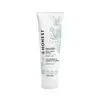What's inside
What's inside
 Key Ingredients
Key Ingredients

 Benefits
Benefits

 Concerns
Concerns

 Ingredients Side-by-side
Ingredients Side-by-side

Water
Skin ConditioningCaprylic/Capric Triglyceride
MaskingGlyceryl Stearate Se
EmulsifyingGlycerin
HumectantCetearyl Alcohol
EmollientCarthamus Tinctorius Seed Oil
MaskingRicinus Communis Seed Oil
MaskingAloe Barbadensis Leaf Juice
Skin ConditioningGlyceryl Stearate Citrate
EmollientButyrospermum Parkii Butter
Skin ConditioningCalendula Officinalis Flower Extract
MaskingChamomilla Recutita Flower Extract
MaskingCocos Nucifera Fruit Extract
EmollientRhus Verniciflua Peel Wax
Hydrolyzed Jojoba Esters
Skin ConditioningGlycine Soja Oil
EmollientEthyl Macadamiate
Skin ConditioningCaprylyl Glycol
EmollientPanthenol
Skin ConditioningMicrocrystalline Cellulose
AbsorbentXanthan Gum
EmulsifyingAllantoin
Skin ConditioningCellulose Gum
Emulsion StabilisingTocopherol
AntioxidantCaprylhydroxamic Acid
Trisodium Ethylenediamine Disuccinate
Ascorbyl Palmitate
AntioxidantHelianthus Annuus Seed Oil
EmollientPotassium Sorbate
PreservativeCitric Acid
BufferingWater, Caprylic/Capric Triglyceride, Glyceryl Stearate Se, Glycerin, Cetearyl Alcohol, Carthamus Tinctorius Seed Oil, Ricinus Communis Seed Oil, Aloe Barbadensis Leaf Juice, Glyceryl Stearate Citrate, Butyrospermum Parkii Butter, Calendula Officinalis Flower Extract, Chamomilla Recutita Flower Extract, Cocos Nucifera Fruit Extract, Rhus Verniciflua Peel Wax, Hydrolyzed Jojoba Esters, Glycine Soja Oil, Ethyl Macadamiate, Caprylyl Glycol, Panthenol, Microcrystalline Cellulose, Xanthan Gum, Allantoin, Cellulose Gum, Tocopherol, Caprylhydroxamic Acid, Trisodium Ethylenediamine Disuccinate, Ascorbyl Palmitate, Helianthus Annuus Seed Oil, Potassium Sorbate, Citric Acid
Water
Skin ConditioningCyclopentasiloxane
EmollientCetyl Alcohol
EmollientParfum
MaskingParaffinum Liquidum
EmollientGlycerin
HumectantDimethicone
EmollientPetrolatum
EmollientCeteareth-20
CleansingStearyl Alcohol
EmollientDimethiconol
EmollientPalmitic Acid
EmollientStearic Acid
CleansingMethylparaben
PreservativeDiazolidinyl Urea
PreservativeCarbomer
Emulsion StabilisingButyrospermum Parkii Butter
Skin ConditioningSodium Hydroxide
BufferingCocos Nucifera Oil
MaskingPropylparaben
PreservativeDisodium EDTA
Butylparaben
MaskingTocopheryl Acetate
AntioxidantPanthenol
Skin ConditioningAloe Barbadensis Leaf Juice
Skin ConditioningButylphenyl Methylpropional
PerfumingAlpha-Isomethyl Ionone
PerfumingBenzyl Salicylate
PerfumingLinalool
PerfumingCoumarin
PerfumingCitronellol
PerfumingEugenol
PerfumingCinnamyl Alcohol
PerfumingWater, Cyclopentasiloxane, Cetyl Alcohol, Parfum, Paraffinum Liquidum, Glycerin, Dimethicone, Petrolatum, Ceteareth-20, Stearyl Alcohol, Dimethiconol, Palmitic Acid, Stearic Acid, Methylparaben, Diazolidinyl Urea, Carbomer, Butyrospermum Parkii Butter, Sodium Hydroxide, Cocos Nucifera Oil, Propylparaben, Disodium EDTA, Butylparaben, Tocopheryl Acetate, Panthenol, Aloe Barbadensis Leaf Juice, Butylphenyl Methylpropional, Alpha-Isomethyl Ionone, Benzyl Salicylate, Linalool, Coumarin, Citronellol, Eugenol, Cinnamyl Alcohol
Ingredients Explained
These ingredients are found in both products.
Ingredients higher up in an ingredient list are typically present in a larger amount.
Aloe Barbadensis Leaf Juice comes from leaves of the aloe plant. Aloe Barbadensis Leaf Juice is best known for helping to soothe sunburns. It is also anti-inflammatory, moisturizing, antiseptic, and can help heal wounds.
Aloe is packed with good stuff including Vitamins A, C, and E. These vitamins are antioxidants, which help fight free-radicals and the damage they may cause. Free-radicals are molecules that may damage your skin cells, such as pollution.
Aloe Barbadensis Leaf Juice also contains sugars. These sugars come in the form of monosaccharides and polysaccharides, folic acid, and choline. These sugars are able to help bind moisture to skin.
It also contains minerals such as calcium, 12 anthraquinones, fatty acids, amino acids, and Vitamin B12.
Learn more about Aloe Barbadensis Leaf JuiceThis ingredient is also known as shea butter. It is an effective skin hydrator and emollient.
Emollients help soothe and soften your skin. It does this by creating a protective film on your skin. This barrier helps trap moisture and keeps your skin hydrated. Emollients may be effective at treating dry or itchy skin.
Shea butter is rich in antioxidants. Antioxidants help fight free-radicals, or molecules that may harm the body. It is also full of fatty acids including stearic acid and linoleic acid. These acids help replenish the skin and keep skin moisturized.
While Shea Butter has an SPF rating of about 3-4, it is not a sunscreen replacement.
Shea butter may not be fungal acne safe. We recommend speaking with a professional if you have any concerns.
Learn more about Butyrospermum Parkii ButterGlycerin is already naturally found in your skin. It helps moisturize and protect your skin.
A study from 2016 found glycerin to be more effective as a humectant than AHAs and hyaluronic acid.
As a humectant, it helps the skin stay hydrated by pulling moisture to your skin. The low molecular weight of glycerin allows it to pull moisture into the deeper layers of your skin.
Hydrated skin improves your skin barrier; Your skin barrier helps protect against irritants and bacteria.
Glycerin has also been found to have antimicrobial and antiviral properties. Due to these properties, glycerin is often used in wound and burn treatments.
In cosmetics, glycerin is usually derived from plants such as soybean or palm. However, it can also be sourced from animals, such as tallow or animal fat.
This ingredient is organic, colorless, odorless, and non-toxic.
Glycerin is the name for this ingredient in American English. British English uses Glycerol/Glycerine.
Learn more about GlycerinPanthenol is a common ingredient that helps hydrate and soothe the skin. It is found naturally in our skin and hair.
There are two forms of panthenol: D and L.
D-panthenol is also known as dexpanthenol. Most cosmetics use dexpanthenol or a mixture of D and L-panthenol.
Panthenol is famous due to its ability to go deeper into the skin's layers. Using this ingredient has numerous pros (and no cons):
Like hyaluronic acid, panthenol is a humectant. Humectants are able to bind and hold large amounts of water to keep skin hydrated.
This ingredient works well for wound healing. It works by increasing tissue in the wound and helps close open wounds.
Once oxidized, panthenol converts to pantothenic acid. Panthothenic acid is found in all living cells.
This ingredient is also referred to as pro-vitamin B5.
Learn more about PanthenolWater. It's the most common cosmetic ingredient of all. You'll usually see it at the top of ingredient lists, meaning that it makes up the largest part of the product.
So why is it so popular? Water most often acts as a solvent - this means that it helps dissolve other ingredients into the formulation.
You'll also recognize water as that liquid we all need to stay alive. If you see this, drink a glass of water. Stay hydrated!
Learn more about Water